Nikon CoolPix S640 Review
Nikon CoolPix S640
Nikon's latest high-performance luxury compact
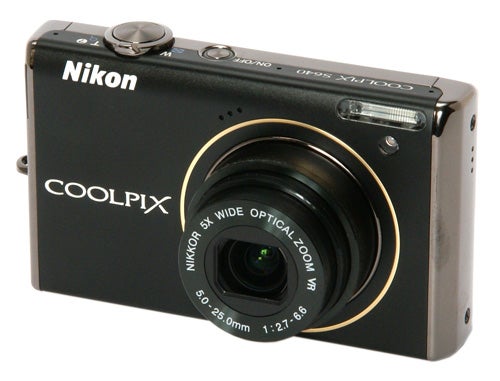
Verdict
Key Specifications
- Review Price: £190.00
The CoolPix S640 is one of a series of recent compact cameras from Nikon featuring the same 12.2-megapixel sensor but with a variety of lens configurations. It sits in the range between the 4x zoom S620 and the 7x zoom S630. The S640 is currently selling for around £190, putting it firmly into the “luxury” bracket, but that price does buy a good range of features, including a 5x zoom lens equivalent to 28-140mm, a 12.2 megapixel CCD sensor and a 2.7-inch 230k LCD monitor. It features lens-shift optical image stabilisation, still an unusual featureon ultra-compact cameras.
The S640 is very small and lightweight, measuring just 91 x 55 x 20.5mm and weighing an insubstantial 135g fully loaded. You could slip it into a shirt pocket or purse and barely know you’re carrying it. Nonetheless for such a small camera the S640 is very pleasant to handle. It’s not quite as comfortable as the S630, but the buttons are reasonably large and well spaced out, and there is a small thumb-grip area on the back. The semi-matt finish is quite grippy and the camera is easy to hold securely.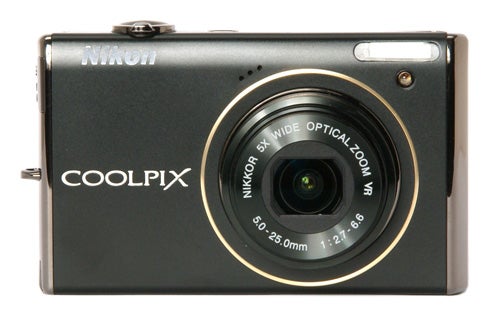
As one might expect from the well-respected name of Nikon, the overall build quality is excellent. The body is aluminium with some plastic trim, and the controls are solidly mounted and operate with a nice positive feel. The LCD monitor is especially good, with a very wide viewing angle in all directions and an effective anti-glare coating that means it is usable even in bright sunlight. I was a bit concerned when I noticed that the D-pad doubles as a rotary wheel control, because that usually spells trouble on a compact camera, but the rotary function is only used for menu navigation and has no effect in shooting mode.
Like most of Nikon’s ultra-compact range the S640 is strictly a point-and-shoot camera, and has few manually adjustable settings. It does have a number of useful automatic features though, including lens-shift optical image stabilisation, allowing shake-free picture taking at shutter speeds as low as 1/15th of a second.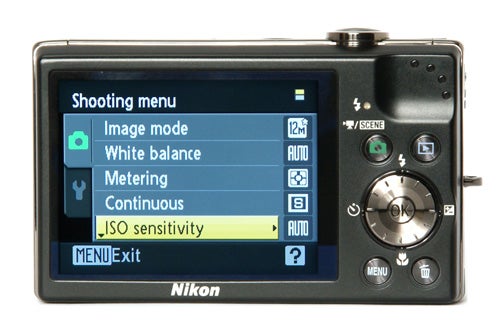
Main shooting modes include fully automatic, a selection of 17 scene mode programs, a Smart Portrait mode which includes face and smile detection, and Subject Tracking mode, useful for photographing moving subjects. It has Nikon’s usual Best Shot Selector mode, which allows instant rejection of blurred shots, and the odd Multi-Shot 16 mode, which shoots an instant collage of 16 images arranged in a grid in one frame.
Unusually for a modern compact the video recording mode is a bit lacklustre, with a maximum resolution of 640 x 480 and 30fps, and with very poor quality mono audio via a noisy internal microphone. Needless to say the optical zoom cannot be used while recording.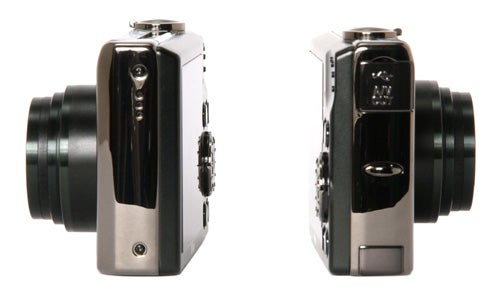
The S640 has no spot metering, no tone, contrast or sharpness adjustment, and even the colour choices are limited to standard, vivid, monochrome, sepia or cyanotype. It does have 16 scene mode programs as well as automatic scene recognition. Other shooting options include a smart portrait mode with face detection, and a subject tracking AF mode for shooting moving subjects.
Nikon’s advertising for the S640 claims that it performs as fast as a digital SLR, with a start-up time of 0.7 seconds. I’m not sure exactly what they’re supposed to be measuring there, but the actual time from pressing the power button to taking the first picture is approximately 1.2 seconds, which is still plenty fast enough and much quicker than most of its rivals, although it does take somewhat longer to finish booting the menu system. The autofocus system is exceptionally fast, indeed almost as fast as that of a DSLR, but the shot-to-shot time of approximately 2.1 seconds in single shot and 1.2 seconds in continuous mode, while reasonably quick by compact standards, isn’t even close to the shooting speed of even an entry-level DSLR. So much for advertising then.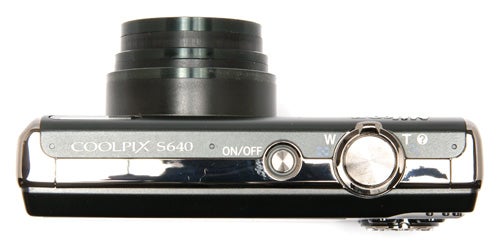
Overall image quality is very good. The lens is nice and sharp, and produces virtually no wide angle distortion, although there is a touch of chromatic aberration at the corners of the frame. Colour reproduction is excellent, with well saturated colours and a natural colour balance. Exposure and focusing are reliably accurate, and the camera performs well in low light conditions. Low light focusing is especially good, focusing quickly in total darkness at a range of several metres thanks to a nice bright AF assist lamp.
Nikon claims that the built-in flash has a range of an astonishing eight metres at wide angle in auto ISO mode. I tried it outdoors, and if you’re prepard to put up with the image quality at 3200 ISO then yes, it will just about reach eight metres. If on the other hand you set the auto ISO range to a more sensible 100-400 ISO the flash range is a much more realistic four metres, which is still pretty good..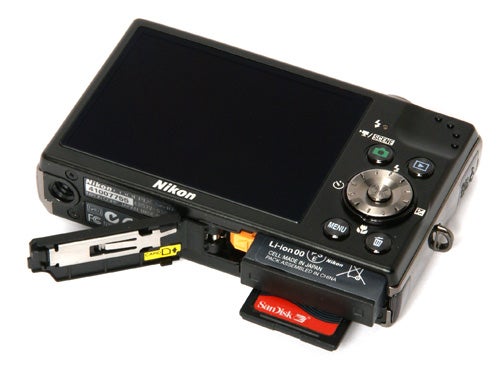
Image noise is also very well handled. Noise effects are visible from 400 ISO upward, but images still have good colour, smooth gradients and plenty of detail even at 1600 ISO. The higher settings of 3200 and 6400 ISO are less good, but still far from hopeless at least for smaller images.
”’Verdict”’
Although it doesn’t live up to Nikon’s extravagent marketing claims, the CoolPix S640 is still a very competent camera. Build quality is good, it handles well, performs briskly and takes a decent picture in a wide range of situations; low light performance is especially good. It’s not quite a bargain, but it is a nice little camera.
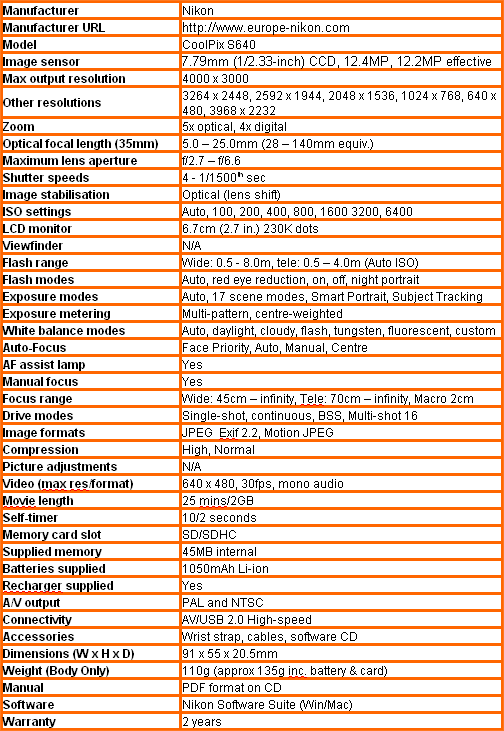
”Over the next few pages we show a range of test shots. On this page the full size image at the minimum and maximum ISO settings have been reduced to let you see the full image, and a series of full resolution crops have taken from original images at a range of ISO settings to show the overall image quality. These ISO test images are shot indoors using shaded natural light.”
—-
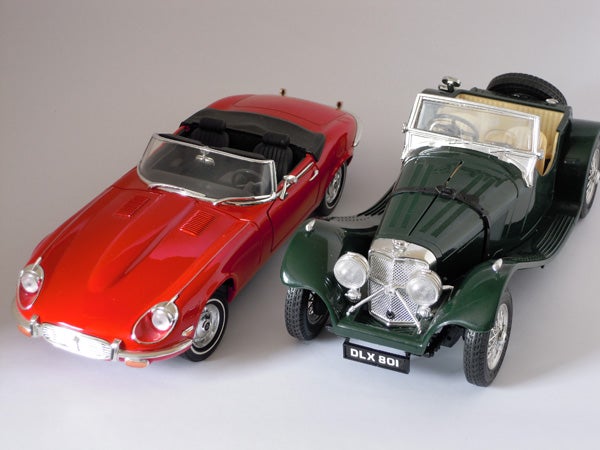
This is the full frame at 100 ISO.
—-
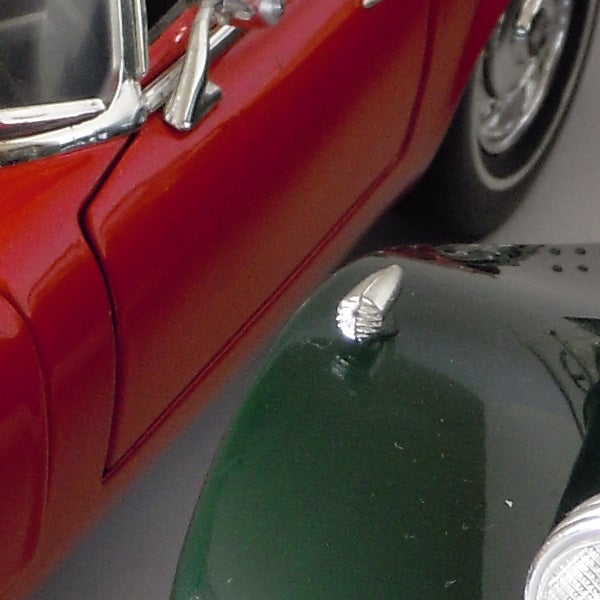
At minimum ISO the image quality is excellent. Those white marks are dust on the model.
—-
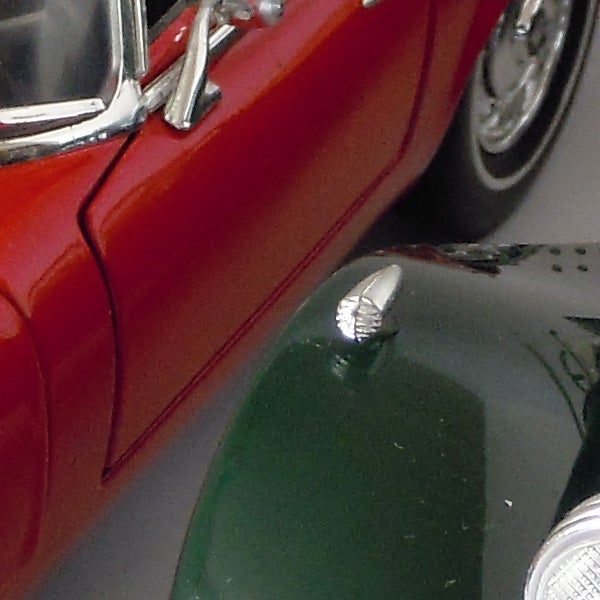
Still no problems at 200 ISO.
—-
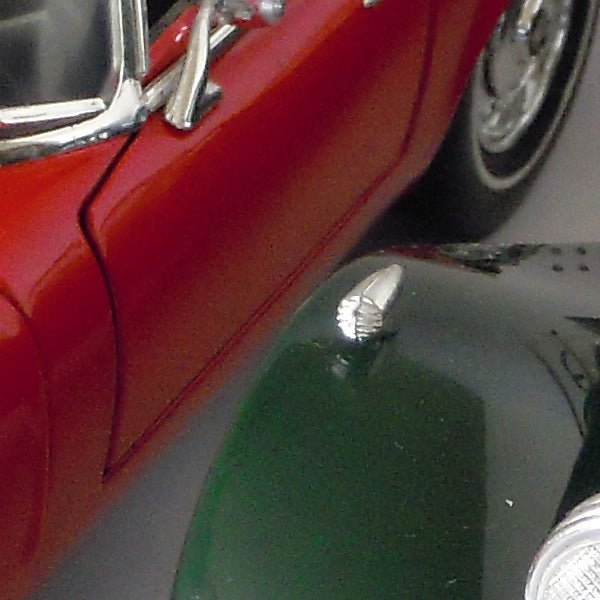
Noise is starting to show at 400 ISO, but the overall quality is still good.
—-
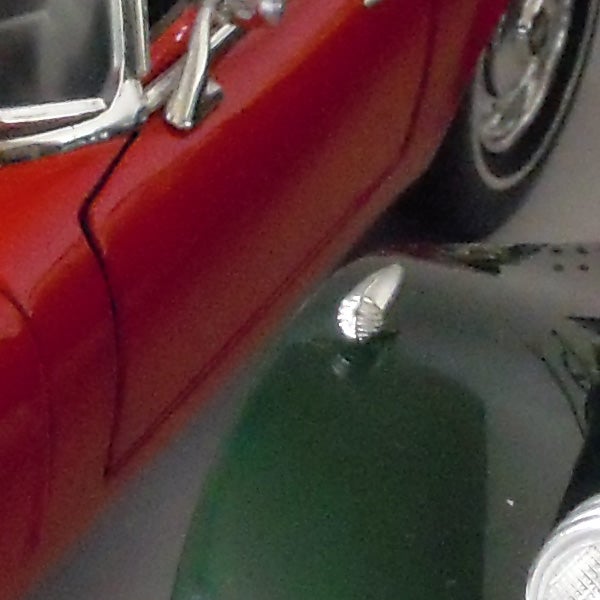
Noise reduction has reduced the level of detail at 800 ISO, but colour rendition is still good.
—-
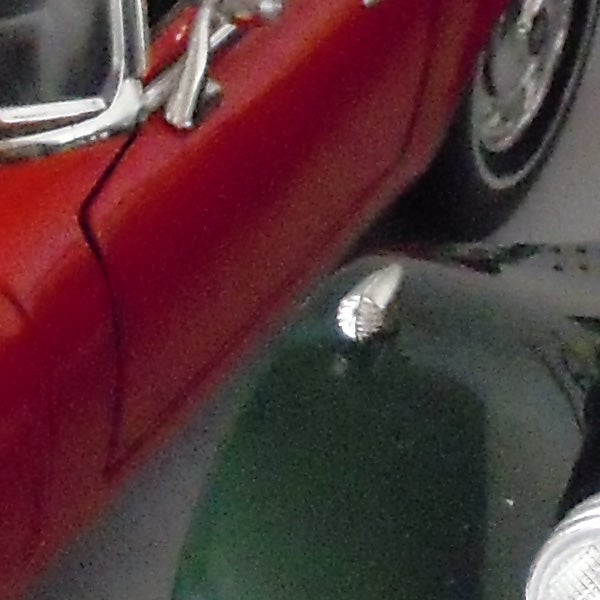
Noise is becoming a problem at 1600 ISO.
—-
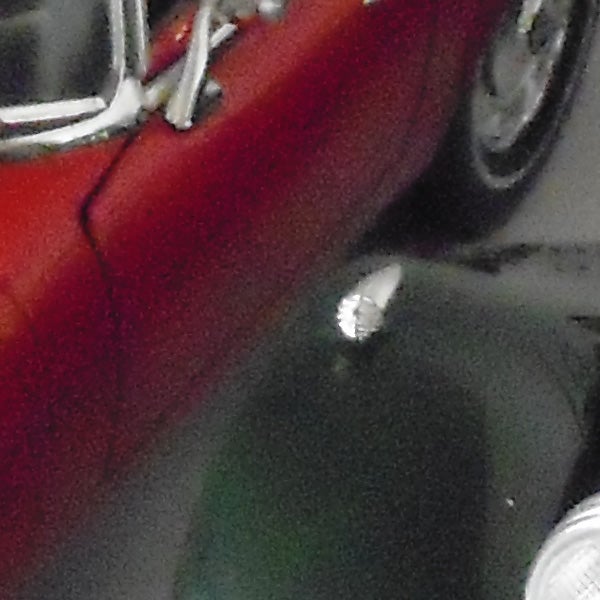
Image quality is greatly reduced at 3200 ISO.
—-
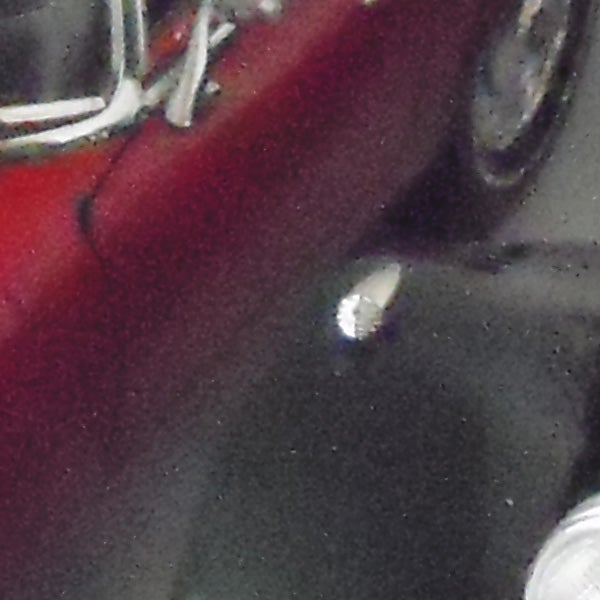
Image noise is causing major problems at 6400 ISO, with some hot pixels and very little detail.
—-
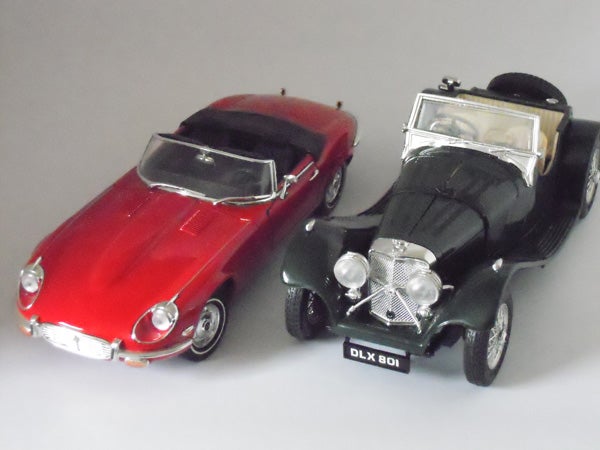
This is the full frame at 6400 ISO.
—-
”A range of general test shots are shown over the next two pages. In some cases, the full size image has been reduced for bandwidth purposes, and a crop taken from the original full resolution image has been placed below it to show the overall image quality. Some other pictures may be clicked to view the original full-size image. ”
—-
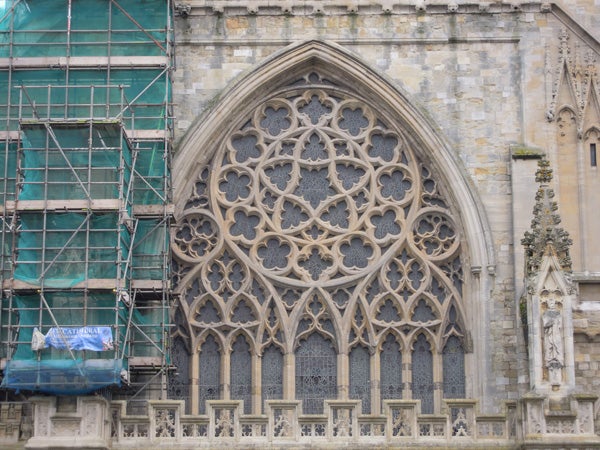
Here’s the usual detail test shot of the West Window of Exeter Cathedral, for you to compare with other cameras. See below for a full res crop, or click to see the whole picture. Downloadable file size is approximately 4.7MB.
—-
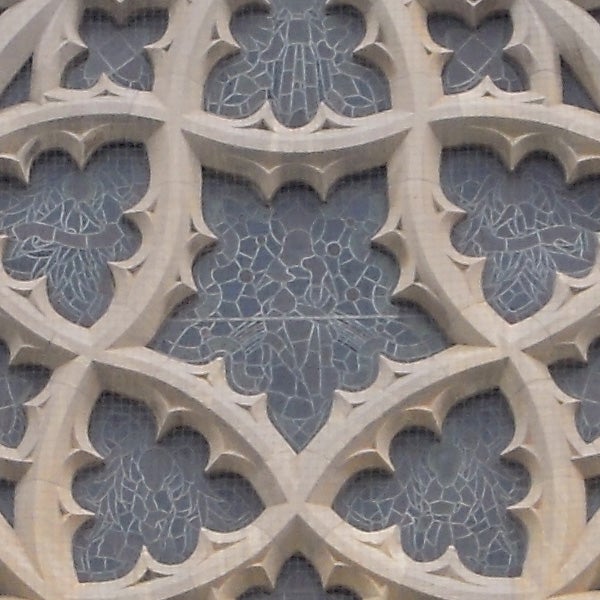
The level of fine detail isn’t as good as one might expect from a 12MP camera, thanks partially to image compression.
—-
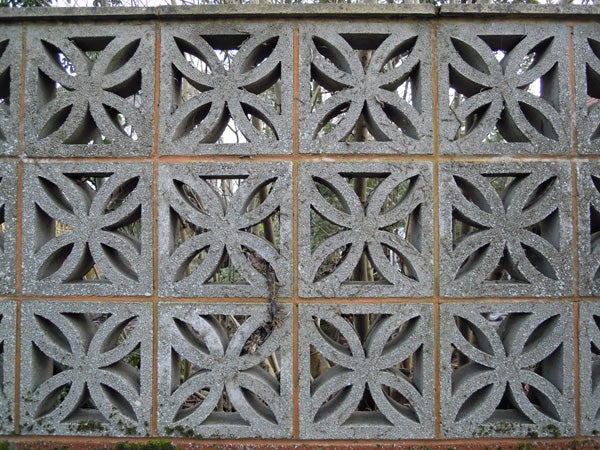
The lens produces a little wide angle barrel distoirtion, but it’s not too severe.
—-
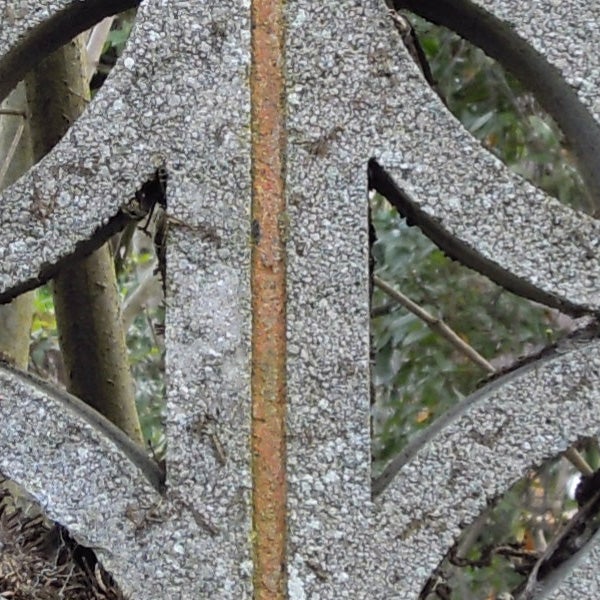
Centre sharpness is pretty good.
—-
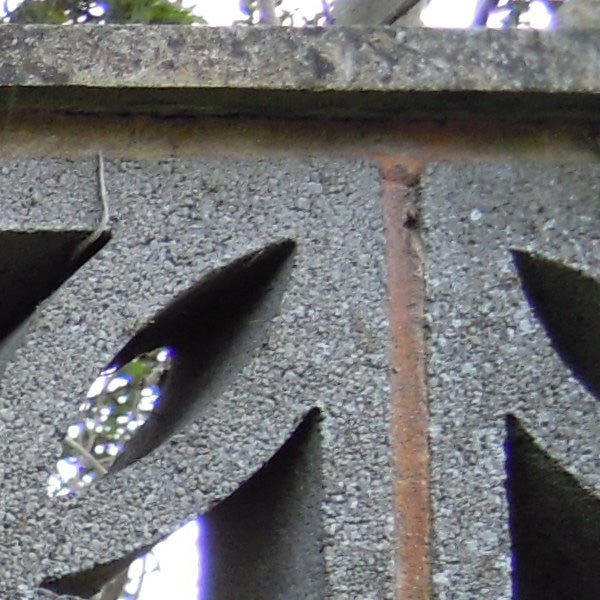
Corner sharpness is also very good, but there is a little bit of purple fringing.
—-
”Here are some general test shots to help evaluate the camera’s overall image quality, including the zoom range of the lens. Some pictures may be clicked to download the full size original image.”
—-
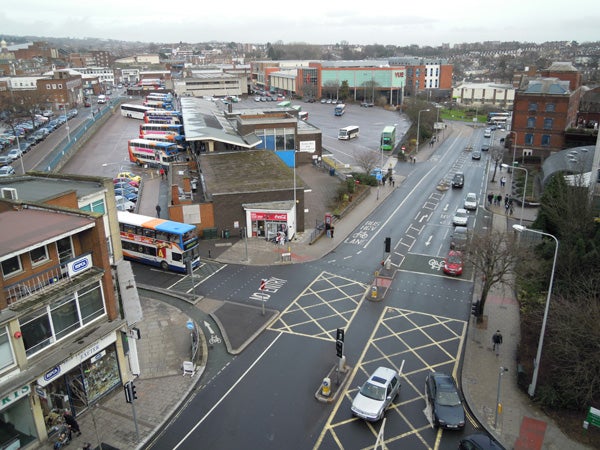
The wide angle end is equivalent to 28mm.
—-
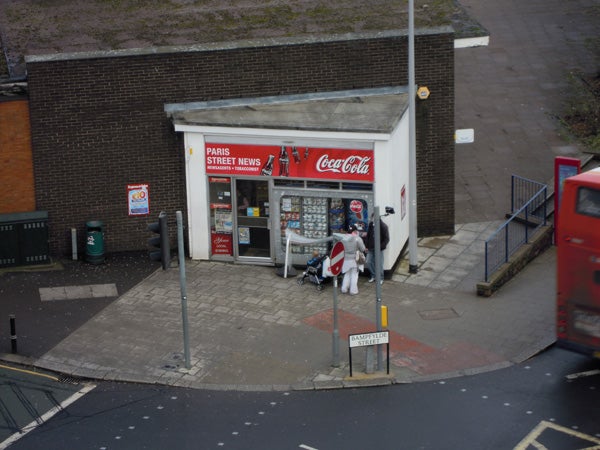
The wide angle end is equivalent to 140mm.
—-
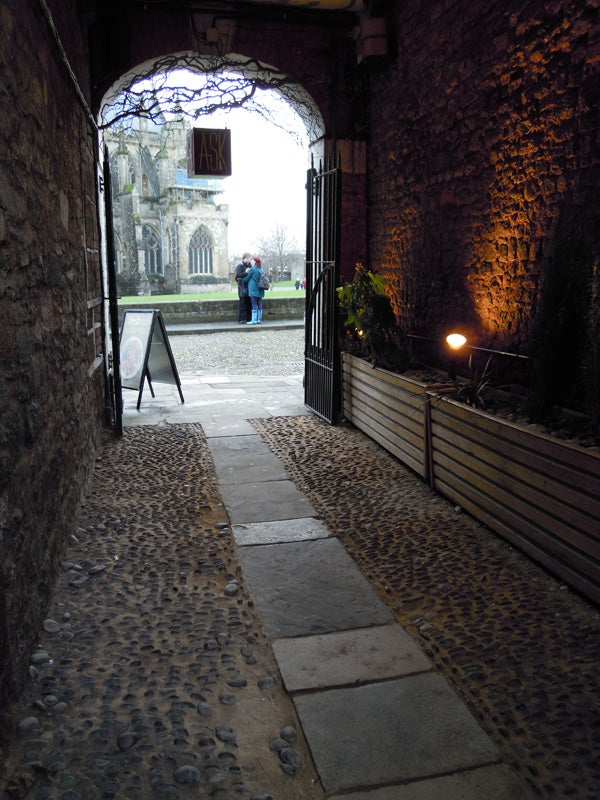
Dynamic range is quite limited, with murky shadows and clipped highlights.
—-
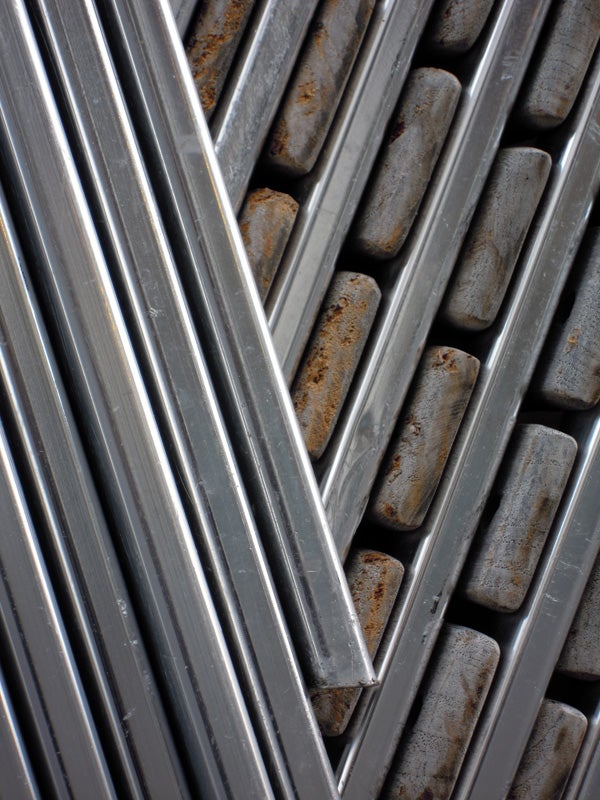
Close-range focusing is quick and accirate.
—-
Trusted Score
Score in detail
-
Value 7
-
Image Quality 7
-
Build Quality 9
Features
| Camera type | Ultra Compact |
| Megapixels (Megapixel) | 12.2 Megapixel |
| Optical Zoom (Times) | 5x |
| Image Stabilisation | Optical |
| LCD Monitor | 2.7 in |
| Flash modes | Auto Flash, Flash ON, Flash OFF, Red-eye Reduction |
| Video (max res/format) | 640 x 480 |
| Memory card slot | Secure Digital (SD) Card, Secure Digital High Capacity (SDHC) Card |

